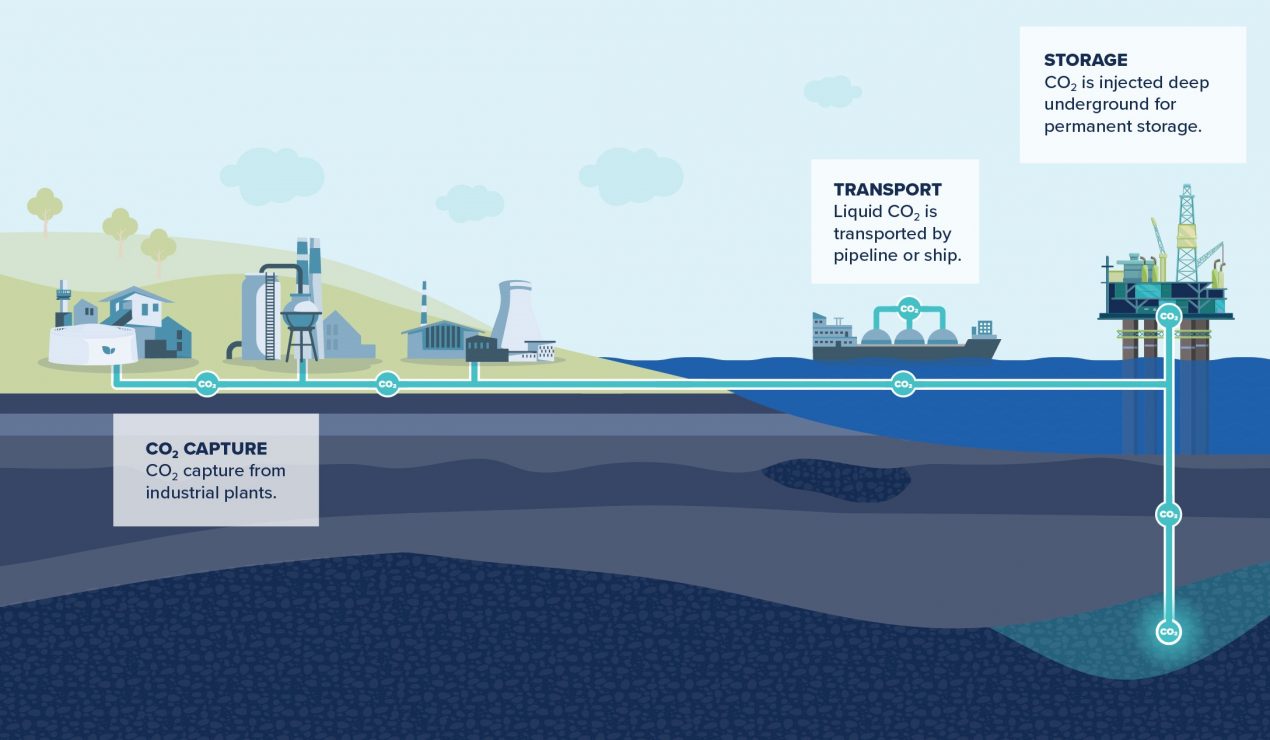Pipelines, Ships, Trucks, and Rail: Transporting CO2
Carbon capture and storage (CCS) is a proven technology suite and a vital part of reaching net-zero emissions by 2050, playing a role alongside other solutions like renewable energy, reforestation, and energy efficiency. CCS helps mitigate climate change by capturing CO2 emissions before they can reach the atmosphere or by removing historical emissions from the atmosphere.
Safely and reliably transporting CO2 from where it is captured to a storage site is the second stage in the carbon capture and storage (CCS) process. Transport of CO2 occurs daily in many parts of the world, however, significant investment in transportation infrastructure is required to enable scale deployment.
How is CO2 Transported?
Commercial-scale transport of CO2 uses tanks, pipelines and ships for gaseous and liquid carbon dioxide. Liquid CO2 occupies much less volume than its gas form, which is why it is often compressed into a liquid state before transport. Pipelines are – and are likely to continue to be – the most common method of transporting the very large quantities of CO2 involved in CCS. CO2 pipeline operators have established minimum specifications for composition. Once the CO2 has been dried (to prevent corrosion) and meets the transportation criteria, the CO2 is measured, compressed and transported to the storage site.
Transport of CO2 can also be undertaken by truck, rail and ship. Trucks are used at some project sites, moving the CO2 from where it is captured to a nearby storage location. Ship transportation is an alternative for many regions around the world without close access to storage. Already in use for transporting small amounts of CO2, larger scale shipments are likely to have much in common with the transportation of liquefied gas, which is a global industry.
Is Transport of CO2 Safe?
Carbon dioxide is much safer to transport than many other substances because it does not form flammable or explosive mixtures with air, like oil and gas do. Moreover, CO2 is not directly toxic to humans or wildlife when released to the ambient air, except in the highly unlikely event that the release is catastrophic – meaning very rapid and in extremely high quantities. However, common safety measures, such as an auto shut-off function when pressure drops in a pipeline, make a catastrophic release highly unlikely.
CO2 pipelines, and other transportation methods, are safe and closely managed under international standards. For example, in the US CO2 pipeline safety is regulated by the federal Pipeline and Hazardous Materials Safety Administration (PHMSA) and CO2 pipeline safety data is publicly reported by PHMSA.
There is significant experience with CO2 pipeline development and operation on land and under the sea. There are around 50 CO2 pipelines currently operating in the US through over 8,000 km which transport approximately 70 million tonnes of CO2 every year.
Does the Infrastructure Needed to Support CO2 Transport Exist?
Extensive networks of pipelines already exist around the world, both on land and under the sea. In the United States (US) alone, there are about 800,000 km of liquid and natural gas pipelines, in addition to 3.5 million km of natural gas distribution lines.
However, pipeline infrastructure to support CCS will need to scale substantially. Reaching climate targets will require 70-100 capture facilities to be built each year. These facilities would need to be supported by 200,000 km of pipeline by 2050, with an average pipeline build rate of 5,200-7,200 km per year. Whilst this may appear challenging, a relevant analogue is the length of natural gas pipelines built in the last decade (8,000km/yr) and at peak construction rate in the 2000s (9,200km/yr).
What is the Role of CCS Networks?
CCS networks continue to emerge as a preferred method of deployment. Networks link CO2 sources close to one another to nearby geological storage. This relies either on ship or pipeline transportation of CO2. CCS networks are sometimes referred to as the ‘hub and cluster’ model, describing the ‘clusters’ of emission sources and the ‘hub’ that collects the CO2 and redistributes it to a storage location.
Networks leverage economies of scale (lower per unit costs for constructing and operating CO2 pipelines) and lower the barriers of entry for smaller CCS projects, which will be crucial to reducing emissions while supporting local jobs.
Several projects around the world have implemented a network strategy. In Canada, the Alberta Carbon Trunk Line (ACTL) project currently transports CO2 from facilities in the Edmonton region and stores it in depleted oil and gas fields 240km away. In Norway, the Langskip (or Longship) project is developing the infrastructure to transport (via ships and a storage pipeline), inject, and store CO2 from regional emitters across Europe by 2024. In the United Kingdom, the Humber and Teesside cluster (or East Coast Cluster) plans to capture and store 27 Mtpa by 2030, accounting for nearly half of all UK industrial emissions.
